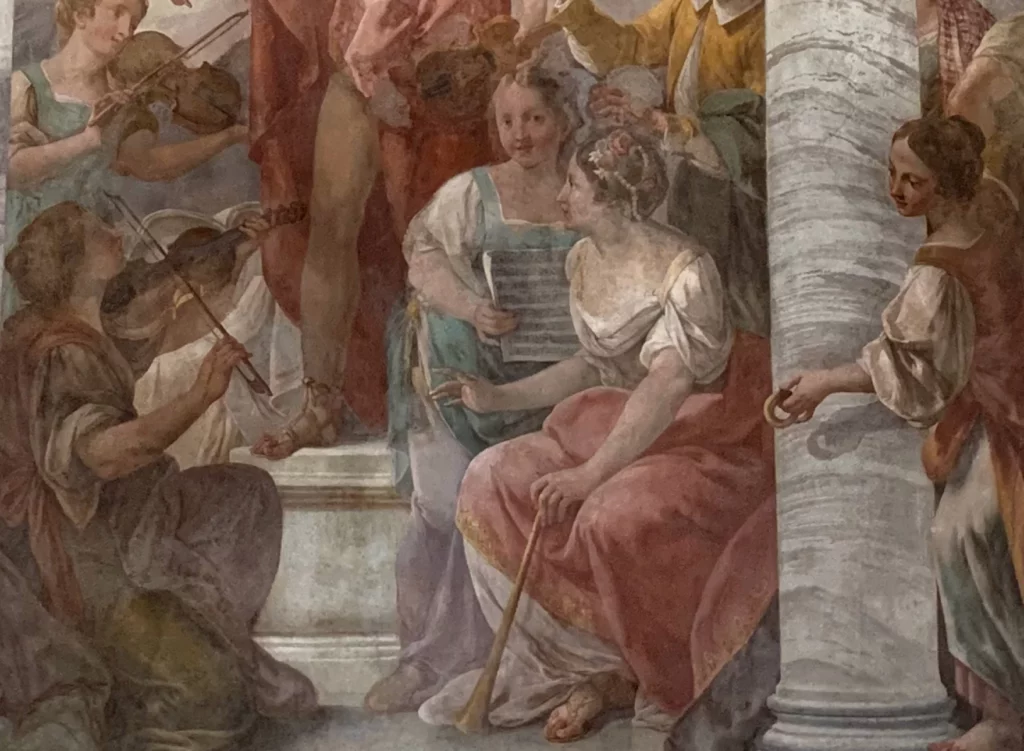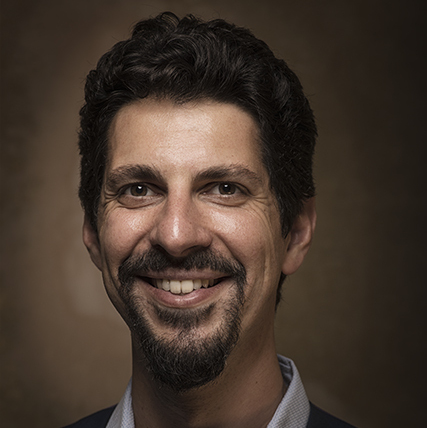
Theresia musicians have two big events coming up this summer: a chamber music residency in Geneva -a welcome return – led by Chiara Banchini from 24-31 July, and an orchestral production as guests of the Early Music Festival in Innsbruck conducted by Christophe Rousset, from 12-18 August, performing with the NovoCanto choir.
Although the programmes are very different (music by Beethoven and Boccherini in Geneva, music by Tommaso Traetta in Innsbruck), they have one thing in common which is very important to us. The core of the Geneva programme, a historical chamber music transcription of Beethoven’s Seventh Symphony, and Traetta’s oratorio Rex Salomon were both critically edited by Simone Laghi, Scientific Advisor of Theresia, with whom we’ve had a brief interview.
Simone Laghi, let’s start with Beethoven’s Seventh Symphony in the transcription for flute and string sextet. What can you tell us about this work?
The transcription was written by Nicolas Mori, an Italian-English violinist who was active in London in the first half of the 19th century. This type of transcription was very common in Europe at the time, to bring symphonic and orchestral works into a chamber dimension (and thus for domestic performance). In this case, it is a very interesting work, especially for the ensemble used, namely flute and string sextet (specifically two violins, two violas, cello and double bass): there are no particular changes in the writing, the flute takes over the role of the wind parts, sometimes flanked by the second viola.
How did you get to work on this transcription and edit the critical edition?
In my research at Cardiff University I dealt with the string quartet repertoire of early 19th-century Italian composers active in London, so I came across the work of Nicolas Mori. A few years ago I had the opportunity to edit the critical edition of this transcription, which was then published by the HH publishing house. However, I believe that Theresia’s is the first performance in modern times. There are, however, other interesting transcriptions by Mori, such as those of Beethoven’s Overtures: unfortunately the double bass parts are missing, so it is impossible to make a critical edition for now.
Beyond the existence of this ‘English’ transcription, is there a relationship between Beethoven and London?
Absolutely. We know, for example, that Beethoven composed the Ninth Symphony at the invitation of the London Philharmonic Society: it is true that the first performance took place in Vienna, but then the Symphony was naturally performed in the English capital. And then it seems that Beethoven had planned to go to London, as Haydn had done years before, but it never actually took place.
Now let’s talk about Traetta’s Oratorio “Rex Salomon”, which Theresia will perform on 18 August as part of the Innsbruck Early Music Festival: what do we know about this composition?
The Rex Salomon was composed by Tommaso Traetta in 1766 to be performed at the Ospedale dei Derelitti in Venice by the ‘Putte’, i.e. the girls residing in this charitable institution. Precisely because it was intended to be performed within the Ospedale dei Derelitti, the vocal ensemble is female only, making it a rather special work within this genre.
What was the occasion for the composition?
Rex Salomon was composed to be performed on the Feast of the Assumption, 15 August 1766. On this particular occasion Traetta had the task of restoring the former glory of the Ospedaletto’s orchestra and choir, which had been neglected in recent years and were experiencing a period of decline. With this oratorio, which was performed four more times in the following ten years, he succeeded in doing so, even though we are in the last years of the glorious history of the Serenissima: with 1797 and the fall of the Republic, even the musical vitality of realities such as the Ospedaletto dei Derelitti faded away.
How did the ‘Putte’ become part of the orchestra and choir?
Often they were girls who had been taken in as children because they were orphans, but in many other cases they were so-called ‘adult daughters’ who were taken in because of their musical merits: it was not easy to get in, the selection process was quite strict. Nor was it easy to get out, because once these talented young girls had been trained, the institution wanted to keep them. Those who managed to pursue a musical career on their own had to do so outside Venetian territory, or if they performed in the city, they did so in secret and under a false name.
What is the source on which you have based the edition from which Theresia will perform?
It is a manuscript kept in Brussels and part of the Fétis collection: this important musicologist, who lived in the 19th century and was the author of a monumental Encyclopaedia of Music and Musicians, probably bought the manuscript on the antiques market, and it is a somewhat unusual piece in the collection. Moreover, the manuscript refers to the last performance, that of 1776, which Traetta partially revised because one of the singers, originally a alto, had been replaced by a soprano.
What are the musical characteristics of Rex Salomon?
The main peculiarity is the vocal ensemble, which is necessarily all female. There is a certain complexity to the writing, although it is far from the excessive virtuosity typical of the theatre of the time. However, there is still a great deal of coloratura and a certain amount of elaboration, a sign that the level of the performers was quite high and that they were addressing an audience with high expectations. It is curious, and gives us a measure of a peculiar situation, that each of the five soloists has two arias, so there is no measurable hierarchy in the increasing number of arias according to degree of importance. The instrumental part, especially the first violins, is also well worked out, detailed in its articulations.
There is a fine record of the very first performance, a letter written by the philosopher Giammaria Ortes to the composer Johann Adolph Hasse on 16 August 1766: “Yesterday I went to a new musical oratory at the Ospedaletto, and I have realized how, without singing well, one can still avoid singing poorly, and how in similar conservatories, the combination of docility and moderate skill can provide more pleasure than abundant skill combined with presumption. If these girls continue in this manner, this could be the case in which music, having generally fallen into the excess in which it currently resides, returns back to that mediocrity that constitutes its perfection.”
Simone Laghi is Sicentific Consultant of the Theresia Orchestra and a digital communication expert. He holds a PhD in music performance from Cardiff University. He has a background as professional musician in the historical performance practice field, and he has collaborated with a large number of groups and ensembles in Europe. He has produced and organised recordings. He has published several musical editions of eighteenth-century works, and has written articles and editorials for Ad Parnassum, Early Music Performer, and Eighteenth-century Music.



